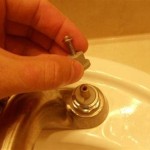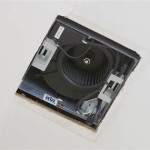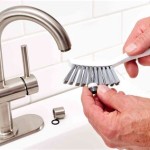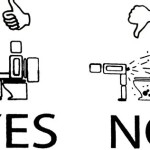How To Change a Stopper in a Bathroom Sink
A malfunctioning bathroom sink stopper can be a significant inconvenience. Whether it’s refusing to close properly, remaining stubbornly stuck, or simply showing its age, replacing the stopper is a common and manageable DIY project. This article provides a detailed guide on how to change a stopper in a bathroom sink, covering various stopper types and the necessary steps for a successful replacement.
Identifying the Stopper Type
Before beginning the replacement process, it is crucial to identify the type of stopper currently installed in the sink. This dictates the removal and installation methods. Common types include:
*Lift-Rod Stopper:
This is perhaps the most prevalent type. It is identifiable by a vertical rod located behind the faucet. Pulling up on this rod closes the stopper, while pushing it down opens it. The mechanism connecting the rod to the stopper is located beneath the sink. *Pop-Up Stopper:
Often found in modern sinks, the pop-up stopper functions by pressing down on the stopper itself. Pressing once closes it, and pressing again releases it. The linkage for this type is also located beneath the sink. *Push-and-Seal Stopper:
Similar in appearance to the pop-up stopper, the push-and-seal stopper relies on a different internal mechanism for sealing and releasing. These stoppers often have a more robust sealing capability. *Twist-and-Turn Stopper:
This type operates with a rotating stopper head. Twisting the stopper in one direction closes it, and twisting it in the opposite direction opens it. *Foot-Actuated Stopper:
Less common in residential settings, the foot-actuated stopper uses a lever or pedal near the base of the sink or vanity. Pressing the lever opens or closes the drain.Determining the existing stopper type will ensure the correct replacement part is purchased and that the appropriate tools and techniques are employed.
Gathering Necessary Tools and Materials
Having the right tools and materials readily available streamlines the replacement process and minimizes potential complications. The following list encompasses most scenarios:
*New Stopper Assembly:
Purchase a replacement stopper assembly that matches the identified type and sink drain dimensions. Carefully review the packaging to ensure all necessary components are included. *Basin Wrench (Optional):
A basin wrench, also known as a sink wrench, is designed to access and loosen nuts in tight spaces, particularly those connecting the drain to the P-trap. *Adjustable Pliers:
Adjustable pliers, such as channel-lock pliers, are versatile tools for gripping and turning various components. *Screwdrivers (Phillips and Flathead):
Different screws may be encountered during the removal and installation process, necessitating both Phillips and flathead screwdrivers. *Penetrating Oil:
Applying penetrating oil to corroded or stuck nuts and bolts can significantly ease the removal process. *Plumber’s Putty:
Plumber’s putty is used to create a watertight seal between the drain flange and the sink basin. *Teflon Tape (Optional):
Teflon tape, also known as PTFE tape, can be used to seal threaded connections, preventing leaks. *Clean Cloths or Rags:
These are essential for cleaning up spills and wiping away excess plumber’s putty. *Bucket or Container:
Place a bucket beneath the sink to catch any water that may spill during the process. *Gloves:
Wearing gloves protects hands from grime and sharp edges. *Safety Glasses:
Safety glasses are recommended to protect eyes from debris. *Flashlight or Work Light:
Adequate lighting is crucial for visibility in the often-dim space beneath the sink.Preparation is key to a smooth and efficient replacement. Gather all necessary items before commencing the project.
Step-by-Step Stopper Removal and Installation
The following provides a general guide to replacing a bathroom sink stopper. Specific steps may vary slightly depending on the stopper type and the complexity of the sink drain assembly.
1. Preparation and Safety:
Begin by clearing the area beneath the sink. Place a bucket to catch any water and wear gloves and safety glasses. Turn off the water supply to the faucet. This is typically accomplished by turning off the shut-off valves located beneath the sink. If shut-off valves are not present, the main water supply to the house must be turned off.
2. Removing the Old Stopper:
The removal process varies depending on the stopper type. For a
lift-rod stopper
, start by disconnecting the lift rod from the clevis (the metal strap that connects the lift rod to the pivot rod beneath the sink). Loosen the screw on the clevis and detach the rod. Next, locate the pivot rod nut on the back of the drainpipe and loosen it. Carefully pull out the pivot rod, which will release the stopper. For apop-up stopper
or apush-and-seal stopper
, gently pull the stopper straight up from the drain. It may require some wiggling and firm pressure. If the stopper is stuck, try using a flathead screwdriver to gently pry it loose. For atwist-and-turn
stopper, simply twist the stopper to its open position and lift it out. Note the orientation of any components as they are removed; this will aid in reassembly.3. Cleaning the Drain Flange:
With the old stopper removed, thoroughly clean the drain flange (the metal ring around the drain opening) using a clean cloth or rag. Remove any old plumber’s putty or debris. Ensure the surface is clean and dry for optimal adhesion of the new plumber’s putty.
4. Installing the New Drain Flange (If Necessary):
If the new stopper assembly includes a new drain flange, the old flange must be removed. This typically involves loosening the large nut located beneath the sink that secures the drain flange to the sink basin. Use a basin wrench or adjustable pliers for this step. Once the nut is loosened, carefully remove the old drain flange from above. Apply a rope of plumber’s putty around the underside of the new drain flange and insert it into the drain opening from above. Press firmly to create a watertight seal. From beneath the sink, reattach the nut and tighten it securely. Remove any excess plumber's putty that squeezes out.
5. Assembling the New Stopper Mechanism:
Refer to the manufacturer's instructions for the new stopper assembly. The assembly process will vary depending on the stopper type. For a
lift-rod stopper
, insert the new stopper into the drain. From beneath the sink, insert the new pivot rod through the drainpipe and into the hole at the base of the stopper. Secure the pivot rod with the pivot rod nut. Attach the clevis to the pivot rod and connect the lift rod to the clevis, adjusting the height of the stopper as needed. For apop-up stopper
or apush-and-seal stopper
, assemble the linkage mechanism according to the manufacturer's instructions. This typically involves connecting rods and springs to the stopper and drainpipe. For atwist-and-turn stopper
, insert the new stopper into the drain and twist it to the closed position.6. Testing for Leaks:
After installing the new stopper assembly, turn the water supply back on. Fill the sink with water and check for leaks around the drain flange and the pivot rod. If leaks are present, tighten the nuts or apply additional plumber’s putty or Teflon tape as needed. Operate the stopper mechanism several times to ensure it functions smoothly. Adjust the lift rod or linkage as necessary to achieve proper sealing and release.
7. Final Adjustments and Cleanup:
Make any final adjustments to the stopper mechanism to ensure it operates correctly. Clean up any spills or debris. Dispose of the old stopper assembly and any used materials properly.
By following these steps, a homeowner can successfully replace a bathroom sink stopper and restore proper draining functionality.
Troubleshooting Common Problems
Despite careful execution, certain issues may arise during the stopper replacement process. Being prepared to troubleshoot these problems can prevent frustration and delays.
*Stuck Pivot Rod Nut:
If the pivot rod nut is corroded or stuck, apply penetrating oil and allow it to soak for several minutes. Use a basin wrench or adjustable pliers to gently loosen the nut. Avoid excessive force, which could damage the drainpipe. *Leaking Drain Flange:
If the drain flange leaks after installation, ensure that the plumber’s putty is properly applied and that the nut is tightened securely. If the leak persists, remove the drain flange, clean the surfaces, and reapply fresh plumber’s putty. Consider using Teflon tape on the threads for additional sealing. *Stopper Not Sealing Properly:
If the stopper does not seal properly, adjust the height of the lift rod or linkage. For a lift-rod stopper, adjust the clevis position on the lift rod. For a pop-up or push-and-seal stopper, adjust the linkages according to the manufacturer's instructions. *Difficulty Removing the Old Stopper:
If the old stopper is stuck, try using a flathead screwdriver to gently pry it loose. Be careful not to damage the sink basin or the drain flange. Applying penetrating oil to the stopper and allowing it to soak may also help. *Incompatibility of New Stopper Assembly:
Before beginning the installation, carefully compare the new stopper assembly to the old one. Ensure that the drain flange diameter and the linkage connections are compatible with the existing sink drain. If the new assembly is incompatible, return it and purchase a suitable replacement.Addressing these potential issues proactively can streamline the stopper replacement process and ensure a successful outcome.

How To Replace A Sink Stopper Quick And Simple Home Repair

Quick Tip 26 Pop Up Stopper Sticks Misterfix It Com

How To Replace Bathroom Sink Stopper Avg Cost 25 65 1 2hrs

How To Remove A Bathroom Sink Stopper Take Out Pop Up Drain From

How To Fix A Bathroom Sink Stopper Step By Guide London Post

How To Replace A Sink Stopper Quick And Simple Home Repair

How To Replace A Rusty Sink Drain Howtolou Com

Fixing Tricky Pop Up Drain Sink Stopper Mechanisms Efficient Plumber

How To Fix Pop Up Drain Waste Plug

Complete Guide Fixing A Sink Stopper Step By Instructions
Related Posts







